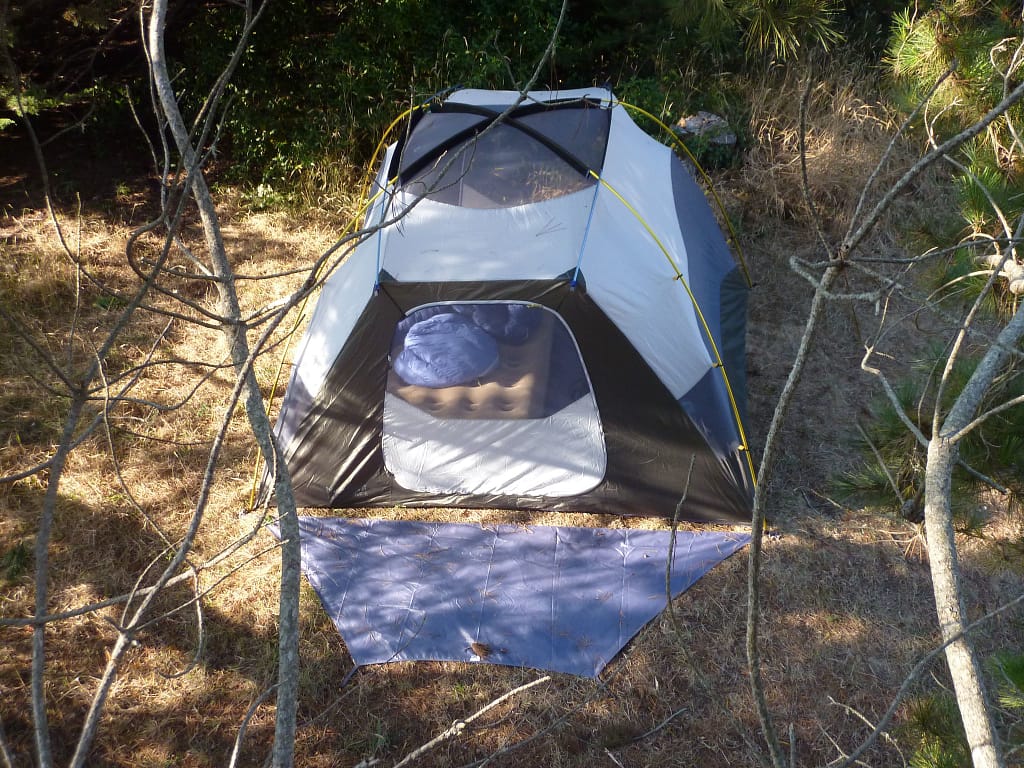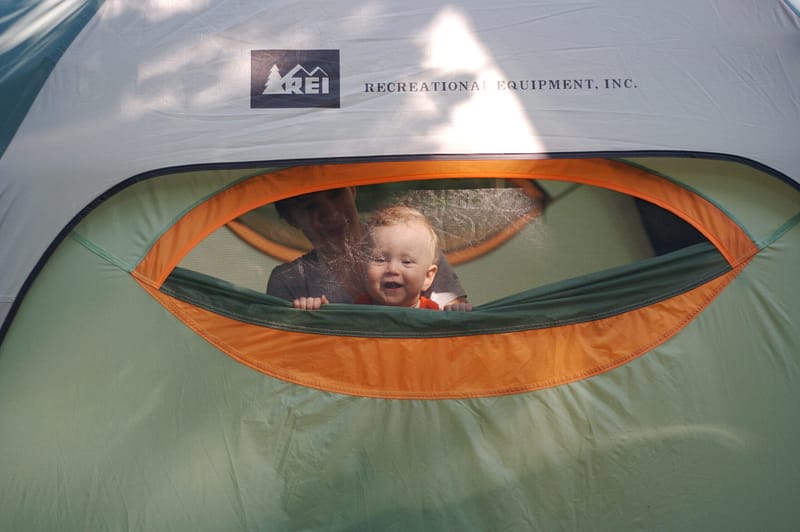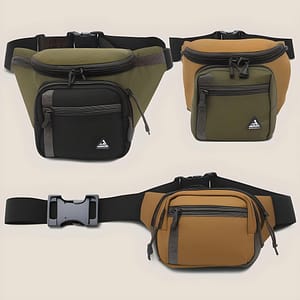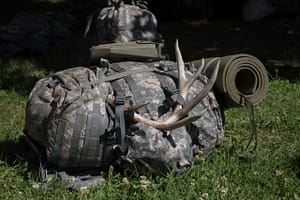Looking for a game-changer for your group camping adventures? Look no further than a 6 person tent. With its spacious interior and comfortable design, a 6 person tent is the perfect solution for accommodating your friends and family on your outdoor excursions. Whether you’re planning a weekend getaway or a longer camping trip, this tent provides ample space for everyone to sleep, relax, and enjoy the great outdoors together.
Choosing Your 6 Person Fortress
When the wild calls for a group gathering, a six-person tent becomes your hub of nocturnal tranquility, coyly nestled within nature’s arms. Key factors like weather resistance, ventilation, and living space turn a mere nylon shell into a domicile where memories are minted under the canvas of stars. Nah, it isn’t just shelter; it’s the command center for your outdoor abode.
In hunting down the perfect tent palace, consider it a “fabric fortress”. It’s gotta stand tall against the capricious moods of Mother Nature, offer up ample room for a rollicking game of cards, and morph into a cozy haven by nightfall. On the market, you’ll encounter options ranging from ultralight minimalism to the borderline opulent; your choice should reflect the type of adventures you tackle while keeping comfort a top bunk priority.
Space & Comfort Essentials
With a six-person tent, elbow room isn’t just nice—it’s essential for a harmonious camping experience.
Spaciousness isn’t lux; it’s a sanity saver. The right tent offers breathing room—not just for bodies, but for spirits to soar.
When it comes to group adventures, nothing kills the vibe faster than feeling crammed. A well-designed tent optimizes space effectively, carving out areas for sleeping, storage, and socializing while maintaining a sense of openness.
Remember, room to stand and stretch makes all the difference—having a high ceiling and a generous footprint means you’re not just camping; you’re reigning over your own outdoor kingdom.
Weatherproofing Must-Haves
When the skies frown upon your campsite, you’ll thank the stars for a tent robust in weatherproofing.
- Seam Taping: Keep leaks at bay where fabric pieces join together.
- Bathtub Flooring: Ensures that ground moisture doesn’t seep in.
- Adequate Ventilation: Prevents condensation buildup inside the tent.
- Durable Rainfly: Should cover the tent completely and withstand heavy rainfall.
- Sturdy Poles: Ensure they can stand up to high winds without snapping.
- Guy Lines: Additional support for your tent in blustery conditions.
Even the most pleasant weather can shift on a dime, making these features non-negotiable.
Stay vigilant about the forecast, but with top-notch weatherproofing, you’ll handle whatever Zeus throws your way with swagger.
High-Tech Features Worth Investing In
Now, let’s talk about the real game-changers: high-tech tent features. Intelligent materials like heat-responsive fabrics can keep your den cooler in the blaze of the day and cozy when the night’s chill sets in. Look for tents that integrate LED lighting systems; they are super clutch when you need to find your socks without waking up your tent-mates.
In the world of six-person tents, tech-savvy elements such as solar power compatibility are not just cool, they’re future-forward. Imagine harnessing the sun’s rays to power up your gadgets, or having a built-in Wi-Fi extender to stay connected when you’re unplugged from the grid. And if you’ve ever fumbled with tent poles, rejoice for quick-setup technology that turns shelter pitching into a breeze. These aren’t just fancy frills—they’re the high-tech heroes that elevate your camping experience to epic levels.
Ventilation Systems
Ever been in a tent that feels like a sauna? Ugh, not cool – literally. Proper air circulation is a must.
- Mesh panels that zip open or close
- Vented rainfly designs for airflow without the wet stuff getting in
- Ground vents to encourage cool air to enter from below
These cool breeze wizards are your besties when it comes to keeping the air moving and the climate inside your tent just right.
A well-ventilated haven means less condensation, too – because waking up to a droplet symphony on your sleeping bag is no one’s jam.
Smart Pockets & Organizers
Ever tried finding your headlamp in the abyss of a dark tent? Nightmare. Smart pocket placement changes the game.
- Easily accessible mesh pockets for items like glasses and phones
- Loop attachments for hanging lanterns or gear
- Zippered pockets to secure valuables and prevent them from wandering off
- Specialized compartments for sorting gear efficiently
With designated spots for your stuff, life gets way simpler—no more spelunking for your socks at midnight.
A clutter-free tent floor? Yes, please. Smart organizers mean tripping over your gear is history.

What is the setup process for a 6 person tent?
Setting up a 6 person tent is a straightforward process that can be easily accomplished with a few simple steps. Here’s a guide to help you through the setup process:
Find a suitable campsite:
- Look for a flat and level area to ensure stability and comfort.
- Consider the direction of the wind and choose a sheltered spot if possible.
- Clear the area of any sharp objects or debris that could damage the tent.
Unpack and lay out the tent:
- Remove the tent from its carrying case and unfold it carefully.
- Lay the tent flat on the ground, making sure it is fully opened up.
Assemble the poles:
- Locate the tent poles and separate them.
- Identify the different sections of each pole and connect them together, following the instructions provided.
- Slide the pole sections through the pole sleeves on the tent body or clip them to the corresponding attachment points.
Raise the tent:
- Once the poles are assembled, begin by inserting them into the designated pole sleeves or attachment points.
- Gradually lift the poles, working from one end of the tent to the other, until the structure is fully erected.
- Make sure all the poles are secure and evenly tensioned.
Secure the tent:
- Use the included stakes or pegs to anchor the tent to the ground.
- Insert the stakes through the loops or grommets located at the bottom of the tent.
- Ensure the stakes are at a 45-degree angle and fully inserted into the ground to maximize stability.
Attach the rainfly (if included):
- If your tent comes with a rainfly, locate it and unfold it.
- Place the rainfly over the tent, aligning the attachment points and loops.
- Secure the rainfly to the tent using the clips, hooks, or Velcro straps provided.
Adjust and finalize:
- Check all the zippers, doors, and windows to ensure they are functioning properly.
- Adjust the guy lines and tensioners to ensure the tent is properly taut and secure.
- Organize the interior of the tent with sleeping bags, mattresses, and other camping gear.
That’s it! Your 6 person tent is now fully set up and ready for your camping adventure. Remember to always refer to the manufacturer’s instructions for any specific guidelines or additional features unique to your tent model.
What is the size and capacity of a 6 person tent?
The size and capacity of a 6 person tent can vary, but generally speaking, it is designed to comfortably accommodate up to six adults. These tents are typically spacious, providing enough room for sleeping and storing gear.
In terms of dimensions, a 6 person tent can vary in size, but it is usually around 10 feet by 10 feet (3 meters by 3 meters) in floor area. This allows for ample space for sleeping bags or air mattresses. Additionally, these tents often have a peak height of around 6 feet (1.8 meters), allowing most campers to stand upright inside.
It’s important to note that the capacity of a tent is based on the assumption of using it for sleeping purposes only. If you plan to bring additional camping gear, such as chairs or a table, you may want to consider a larger tent to ensure you have enough space for everything.
When choosing a 6 person tent, it’s also worth considering the tent’s layout and internal features. Some models offer separate sleeping compartments or dividers, allowing for added privacy and organization within the tent. Others may have vestibules or awnings, providing extra storage space for gear or sheltered areas for cooking or relaxing.
Remember, while the term “6 person tent” indicates the number of people it can sleep, it’s always a good idea to consider the size and layout of the tent to ensure it meets your specific needs for comfort and storage space during your camping adventures.
What is the weight and portability of a 6 person tent?
When considering the weight and portability of a 6 person tent, there are a few key factors to keep in mind.
Weight: The weight of a 6 person tent can vary depending on the materials used and the design of the tent. Generally, larger tents tend to be heavier due to the additional fabric and structural elements required to accommodate more people. However, advancements in lightweight tent technologies have made it possible to find 6 person tents that are relatively lightweight compared to their size.
Portability: While 6 person tents may not be as compact and easy to transport as smaller tents, many manufacturers have made significant strides in improving the portability of these larger tents. Look for tents that come with a carrying bag or storage sack, which makes it easier to pack and transport. Some 6 person tents also feature innovative designs that allow for easy disassembly and folding, further enhancing their portability.
When shopping for a 6 person tent, be sure to consider your specific needs and preferences. If you’re planning on backpacking or hiking to your campsite, you may prioritize a lightweight and compact tent. On the other hand, if you’re driving to your destination and have plenty of space to store and transport the tent, weight may not be as much of a concern.
It’s also worth noting that the weight and portability of a 6 person tent may not be the sole deciding factor when choosing a tent. Other factors such as durability, weather resistance, and ease of setup should be taken into consideration to ensure you find a tent that meets all your camping needs.
Are there any specific maintenance or care instructions for a 6 person tent?
Yes, there are some specific maintenance and care instructions that you should follow to keep your 6 person tent in good condition.
Firstly, it is important to properly set up and take down the tent. Always make sure the ground is clear of any debris or sharp objects that could damage the tent floor. When setting up the tent, use a groundsheet or footprint underneath to provide an extra layer of protection.
After each camping trip, it is crucial to thoroughly clean and dry the tent. Remove any dirt, dust, or mud from the exterior and interior using a soft brush or cloth. Pay special attention to the zippers and seams, ensuring they are clean and free from any debris.
When it comes to storing the tent, always make sure it is completely dry to prevent mold and mildew growth. Avoid storing it in a damp or humid environment. Fold the tent carefully and avoid sharp creases that could weaken the fabric over time.
If your tent becomes dirty or stained, do not use harsh chemicals or detergents to clean it as they can damage the waterproof coating. Instead, use a mild soap specifically designed for outdoor gear and follow the instructions provided by the manufacturer.
Regularly inspect your tent for any signs of damage such as tears, holes, or worn-out seams. If you notice any issues, repair them promptly using a tent repair kit. It’s always a good idea to carry a repair kit with you when camping so you can fix any minor damages on the go.
By following these maintenance and care instructions, you will prolong the lifespan of your 6 person tent and ensure it remains in excellent condition for many camping adventures to come.
Is a 6 person tent suitable for all types of weather conditions?
While a 6 person tent can provide ample space for a group of campers, its suitability for all types of weather conditions depends on various factors.
The primary consideration is the season rating of the tent. Tents are typically categorized into three-season, four-season, and extended-season tents.
Three-season tents are designed for spring, summer, and fall camping. They offer good ventilation and protection against mild rain and wind. However, they may not be suitable for extreme weather conditions like heavy snow or strong gusts of wind.
Four-season tents, on the other hand, are built to withstand harsh winter conditions. They feature sturdy materials, reinforced poles, and a more robust design to handle heavy snowfall, high winds, and colder temperatures. These tents also provide better insulation to retain warmth inside.
If you plan to camp in areas with unpredictable weather or during transitional seasons like spring and fall, an extended-season tent might be a better option. These tents are designed to strike a balance between three-season and four-season tents, offering enhanced weather resistance without compromising too much on ventilation and versatility.
Ultimately, the suitability of a 6 person tent for all types of weather conditions will also depend on other factors like proper site selection, correct tent setup, and the use of additional weatherproofing techniques such as seam sealing and investing in a quality rainfly or footprint.
In summary, while a 6 person tent can accommodate a decent-sized group, it’s important to consider the specific weather conditions you’ll be facing and choose a tent with an appropriate season rating to ensure comfort and safety during your camping adventures.





